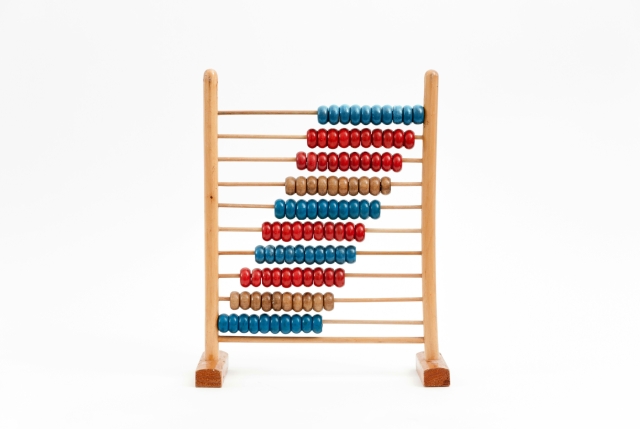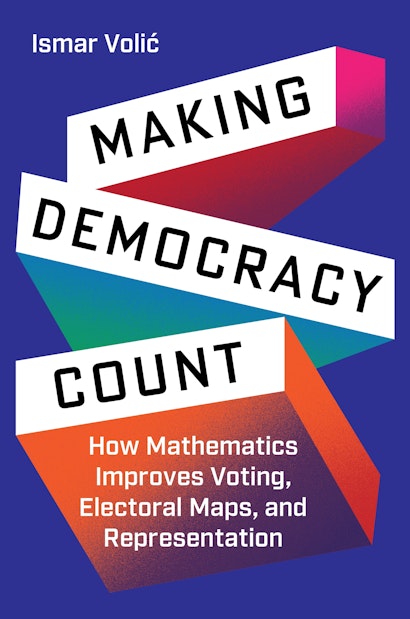The Declaration of Independence is a mathematical document. It starts by proclaiming certain truths to be self-evident and proceeds to list them. In math, such statements are the axioms of a theory. They are things everyone can agree on that constitute the starting point upon which a theory is built. You can’t start from nothing, and axioms are the concrete foundation of the house that’s being erected. The most famous example is Euclid’s axioms. They say things nobody would dispute, like “given any two points, a line can be drawn through them.” And starting from only a few statements, the vast field of geometry arises, full of intricate constructions, algorithms, and theorems.
After the Declaration of Independence establishes its axioms, it also states a theorem: the United States of America is better off without the British Crown. The rest of the document is devoted to the proof of this theorem, establishing its validity by exhibiting how British rule violates the axioms.
Sure, it might seem like I’ve taken some interpretational liberties with one of our nation’s most revered documents. But it’s not me. The man who drafted it, Thomas Jefferson, was a scholar of Euclid and liked the axiomatic approach. In fact, both he and cowriter John Adams acknowledged the parallels (no pun intended) between the two and were explicit about their intention to model the Declaration of Independence after Euclid.
Eleven years later, the framers continued to grow the American democracy at the Constitutional Convention. Many of the decisions they had to make required mathematical reasoning: What should the size of the population represented by each member of the House of Representatives be? Which formula should be used for apportioning House seats to states? What should the sizes of the supermajorities in Congress be to override a presidential veto? These questions are highly non-trivial and require insightful quantitative thinking. The framers, broadly educated as they were—including in mathematics—were well-equipped to tackle the numeracy of democracy.
This is why they would be shocked to see what the basic quantitative mechanisms of democracy they set up have degenerated to. The failures of our democracy’s mathematical infrastructure would horrify them. A democracy running on algorithms that produce unrepresentative results, support a duopoly, encourage partisanship, and elevate fringe ideologies—this is not what they had in mind.
For example, plurality (or first-past-the-post) voting has become a doomsday instrument of polarization, vilification, and antagonism. It causes spoilers and vote splitting and can elect someone with only a small fraction of support (I write this in a congressional district represented by a candidate who won 22% of the primary vote and cruised through the uncompetitive general election). It promotes a two-party system by denying third-party and independent candidates a chance to gain enough traction to clear the high entry bar. It rewards negative campaigning since a vote against one candidate necessarily means a vote for the only other one.
Plurality voting permeates our elections, including in the primaries, which have become vehicles for extremism due to a flawed delegate allocation formulas and low turnout. On Super Tuesday, the formulas gave Trump 94% of the delegates even though he won 76% of the votes. In 2016, he won fewer than 50% of the primary votes but still become the nominee. Meanwhile, millions of independent voters have no say in the process. Even alternative systems, like top-two primaries in California, cause strange occurrences when paired with a mathematically insufficient voting systems like plurality. In February, for example, Adam Schiff, a California Democrat, supported a Republican rival and not another Democrat during his own Senate bid.
The Electoral College, a concept that gave the framers headaches as the seemingly least bad of the bad options, has by now concentrated voting power in a handful of swing states where most of the campaigning happens. The electors are party operatives instead of apolitical and objective appraisers of the presidential candidates. The discrepancy between the popular and the electoral win is a mathematical likelihood in close races, bringing into question the entire presidential election system.
The framers would be incredulous that each House representative now speaks for 760,000 constituents. For them, somewhere between 30,000 and 50,000 was optimal. And as they would surely immediately notice, the never-greater gap between representatives and those they represent is easy to fill by lobbyists and special interest groups.
Gerrymandering would not be unfamiliar to the framers, but they would be appalled to see that it now silences the voices of millions who live in districts made uncompetitive because of the intentional way they were drawn. More than 90% of the districts have predetermined election outcomes in favor of one party or the other because of gerrymandering and plurality voting.
If they could see us now, the framers would surely hit the mathematical reset button on our democracy. They knew that math is a clarifying way of looking at the world. It provides empowering confidence and is accessible to anyone. It readily reveals the deficiencies of our current democratic processes and knows which new or updated ones can work better.
I like to imagine them saying that we need to use ranked choice voting. That our districts should be multi-winner and those winners should be decided by a proportional representation method. They would mandate open primaries, again decided by ranked choice voting. They would immediately add hundreds of seats to the House. And I especially like to imagine that they would abolish the Electoral College and replace it by the popular vote. Heck, they might even reconsider having the Senate, seeing as how the 26 least populous states, accounting for less than 18% of the population, hold the majority of the chamber.
Math is the engine of democracy. Using the best version of mathematics is of benefit to everyone. Deploying a voting method that best captures the will of the people; electing our officials in a way that respects the basic one person, one vote axiom of democracy; creating conditions so that underrepresented groups have a voice—these should be universal aspirations, and their implementation should be steered by tools that are equally all inclusive. Mathematics is one of those tools.
Ismar Volić is a professor of mathematics at Wellesley College and the director of the Institute for Mathematics and Democracy. His work has appeared in publications such as The Hill, Cognoscenti, and Education Week.

